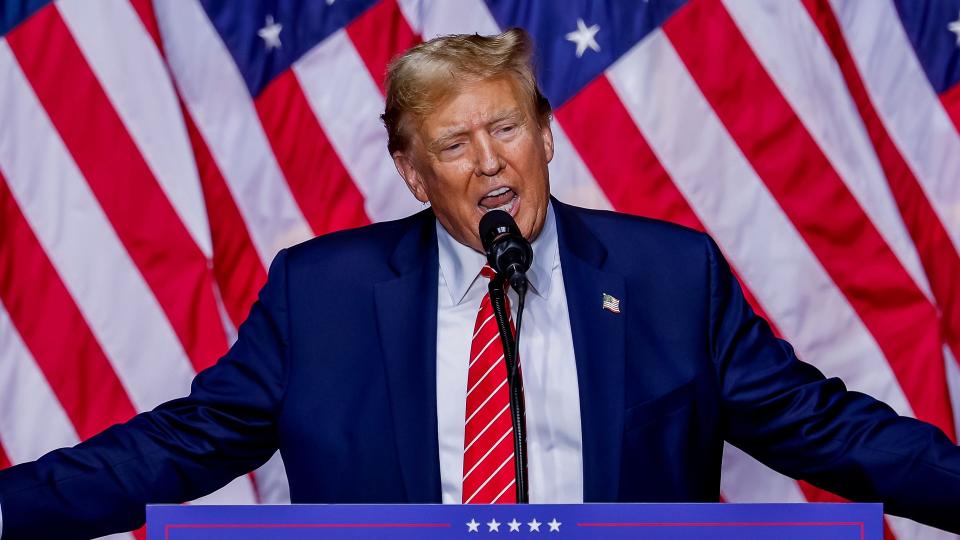3 Financial Talking Points You Should Ignore When it Comes to Trump, Biden and the Economy

The upcoming presidential election is unique in several ways. One of the most important is that both Trump and Biden have track records as president, so we can see how they’ve performed in the job they’re looking to fill. We also know how each has performed in the economy.
There are many financial talking points when it comes to every election, but some of them are more important to pay attention to than others. Here are three things you can ignore about the economy, and three you should absolutely pay attention to.
Learn more: 5 Presidents Who Raised Taxes the Most, and 5 Who Lowered Them
Explore: 4 Genius Things All Wealthy People Do With Their Money
Wealthy people know the best money secrets. Learn how to copy them.
Ignore the National Debt…
The national debt is the amount of money that the U.S. Government has borrowed that is still outstanding. Right now, it is $36.61T.
When Trump took office in 2016, the national debt was $24.87T. When he left office in 2020, it was $31.76T, an increase of $6.89T. During Biden’s tenure, the national debt increased by $4.85T.
While these are certainly eye-popping numbers, it’s important to understand that $6.8T of this is money that the government actually owes itself. The number most economists focus on is debt that is held by the public, which is about $2.6T.
Explore: Trump-Era Tax Cuts Are Expiring — How Changes Will Impact Retirees
…Except in Combination with GDP
Looking at the national debt in isolation doesn’t give you the whole picture, however. When you look at the national debt in combination with the gross domestic product (GDP). This provides more information about the country’s ability to repay its debt. When the debt to GDP ratio is over 100, it indicates that the country could have trouble paying back what it’s borrowed. The first time the debt-to-GDP ratio was over 100% was in 2013, and it peaked at 127% in 2020. Since then, it’s been on a decline, and it’s now at 123%. If you consider the debt held by the public, as most economists do, that currently represents about 98% of GDP.
Even though the national debt is higher as a percentage of GDP than it has been, the Penn Wharton Budget Model says it doesn’t become unsustainable until it reaches 200% or higher. That said, the same model indicates that corrections must be made within the next 20 years in order for the country to avoid default.
Ignore Inflation
Inflation is on many people’s minds these days, as sharp increases in prices have had consumers feeling the pinch. But, while the annual inflation rate spiked from 1.4% in 2020 to 7% in 2021, it has declined to 3.4% in both 2023 and 2024 to date.
Inflation is a natural component of the economic cycle, and while it has recently been more volatile than usual, there are good economic controls in place to moderate inflation.
Pay Attention to Real Disposable Income
Like many economic indicators, inflation doesn’t live in a vacuum. To consider its impact on consumers, you have to consider disposable income — the amount of money people have left after taxes. Real disposable income is adjusted for inflation, so if inflation goes up but your salary goes up too, your real disposable income could remain flat or even increase.
Like many indicators, real disposable income has shown some volatility over the past few years due to the pandemic and the ensuing spike in inflation. In 2021, real disposable income per capital spiked to $51,519, likely as a result of stimulus programs. There was a little dip in 2022 to $48,317, and then an increase in 2023 to $50,069. So, even though consumers may be lamenting their higher grocery bill, they are becoming increasingly better off.
Ignore the Stock Market
The months leading up to a presidential election often see an uptick in the number of pundits attempting to predict what will happen to the stock market if one candidate or the other wins, if one party or the other takes control of the House or the Senate, and so forth. The fact of the matter is that lawmakers have very little to do with stock market performance, and the stock market is not an indicator of the health — or lack thereof — of the economy in general.
Pay Attention to the Budget Deficit
The budget deficit is the amount of money the government spends in excess of what it takes in. If the government takes in more than it spends, that’s a surplus. A surplus has happened four times in the last 50 years.
In 2020, the government operated at a deficit of $3.13T, primarily due to the costs associated with the Covid-19 pandemic. In 2023, the deficit was $1.7T.
Just like with your own personal budget, there are two ways to correct a government deficit: spend less or earn more. The government can cut back on programs, or it can increase the amount of tax revenue it collects, or it can do some combination of both of these things.
The economy is an important part of any political candidate’s campaign platform, particularly for presidential candidates. Understanding where each candidate stands on these important issues will help voters make an informed choice.
More From GOBankingRates
I'm a Shopping Expert: 6 Things Retirees Should Never Put In Their Grocery Cart
6 Things to Try This Week if You're Behind on Your Savings Goals
This article originally appeared on GOBankingRates.com: 3 Financial Talking Points You Should Ignore When it Comes to Trump, Biden and the Economy